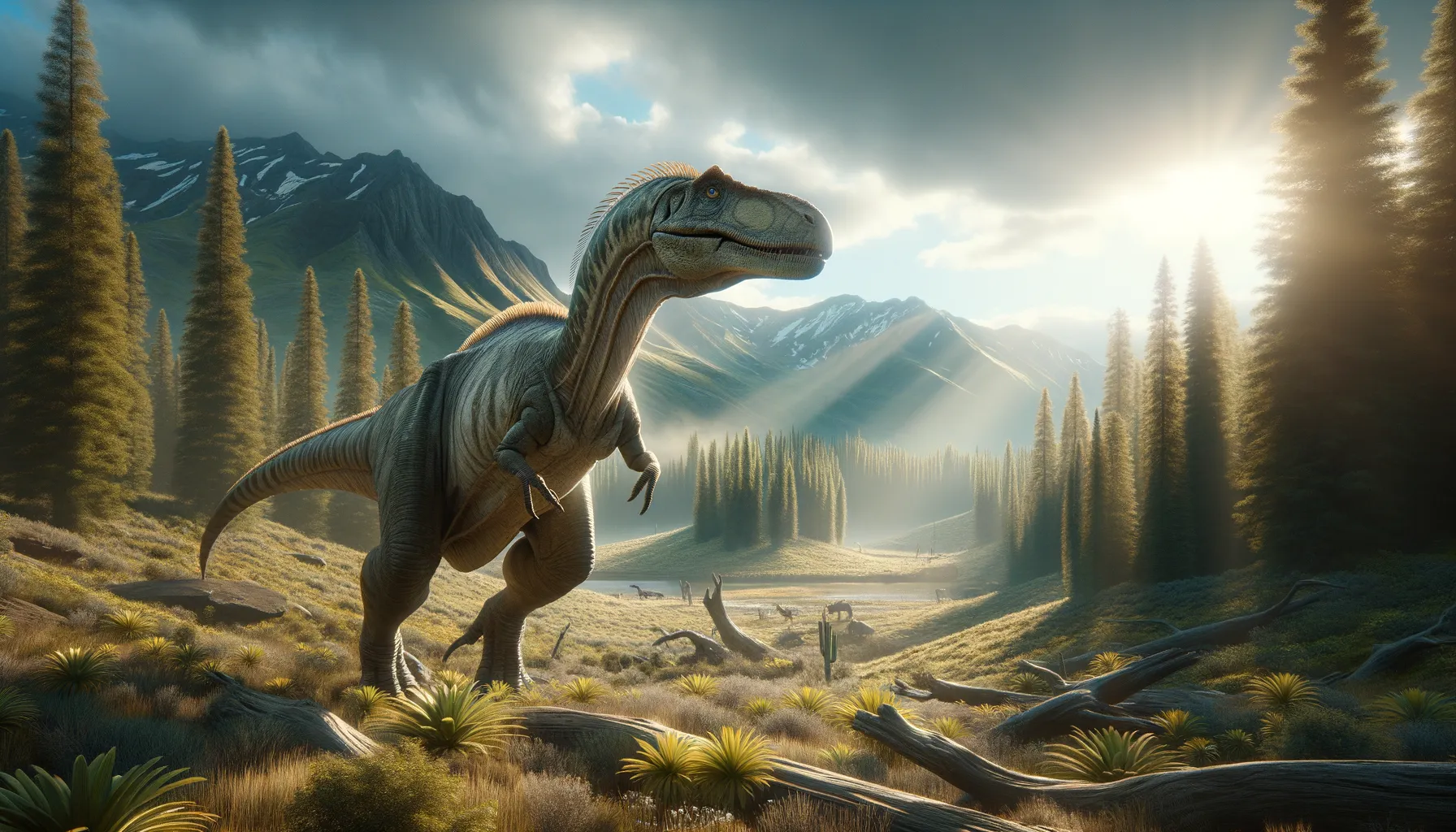
Kundurosaurus
Duck-billed giant of the eastern edges.
Period
Cretaceous
Length
About 8 meters long.
Height
Approximately 3 meters tall at the shoulder.
Weight
Estimated to weigh about 3 tonnes.
Kundurosaurus was a herbivorous dinosaur from the Cretaceous period. Known for its large size and duck-billed face, it lived in what is now Far East Russia. Its fossils have provided valuable insights into dinosaur life in Eastern Asia. As a member of the hadrosaur family, it shared common features with other duck-billed dinosaurs, such as a broad snout and specialized teeth for chewing tough plant material.
Diet
Kundurosaurus was herbivorous, feeding primarily on plants. It likely consumed a variety of vegetation, including leaves and twigs. Its teeth were well-adapted for grinding down tough plant material.
Hunting
As a herbivore, Kundurosaurus did not hunt. It likely browsed for plants in groups to ward off predators. Its large size was also a deterrent against potential threats.
Environmental challenges
Kundurosaurus faced challenges such as changing climate conditions that could affect vegetation patterns. Predation was another concern, necessitating strategies for survival such as herding. Additionally, competition for food resources with other herbivorous dinosaurs may have been significant.
Speed
Moderate mover, likely not very fast due to its build.
Lifespan
Estimated to live several decades.
First discovery
Discovered in the Amur region of Russia.
Fun Facts
- Kundurosaurus was a dinosaur that lived about 70 million years ago during the Late Cretaceous period.
- This dinosaur belonged to a group known as hadrosaurs, often referred to as 'duck-billed dinosaurs' due to their distinctively shaped snouts.
- Kundurosaurus was a herbivore, which means it fed on plants, possibly munching on leaves, seeds, and fruits.
- It was discovered in the Amur Region of Russia, showcasing the diversity of dinosaur species across the globe.
- The name Kundurosaurus means 'Kunduro lizard,' named after the Kundur locality where its fossils were first found.
- It is believed that Kundurosaurus could have used its strong tail for balance while walking on its hind legs.
- Kundurosaurus is a relatively new find in paleontology, being formally described only in 2012, which excites many dinosaur enthusiasts as we continue to learn more about this species.
Growth and Development
Kundurosaurus likely grew rapidly in its early years to reach its massive size. This fast-paced growth would help evade predators. As it matured, its growth would slow, with a focus on maintaining its large body.
Habitat
The habitat of Kundurosaurus was likely a mix of forests and open areas. It would have required ample plant life to sustain its diet. Water sources would also be essential for its survival in the Cretaceous environment.
Interaction with other species
Kundurosaurus likely coexisted with various other dinosaur species. It may have been preyed upon by large carnivorous dinosaurs. Its interactions would also include competition with other herbivores for resources.
Natural lifespan
The natural lifespan of Kundurosaurus might extend to several decades.
Reproduction
Females likely laid clutches of eggs in nests. These nests would have been protected by the herd. Young likely stayed with adults for protection and learning essential survival skills.
Social behaviour
Kundurosaurus may have traveled in herds for safety. Social structures within these groups likely provided protection against predators. Its social behavior would have included communication through sounds and body language.
Fossil locations
Fossils of Kundurosaurus have been primarily found in Far East Russia. These finds are significant in understanding dinosaur distribution in Asia. Discoveries have been limited but crucial in piecing together its existence.
